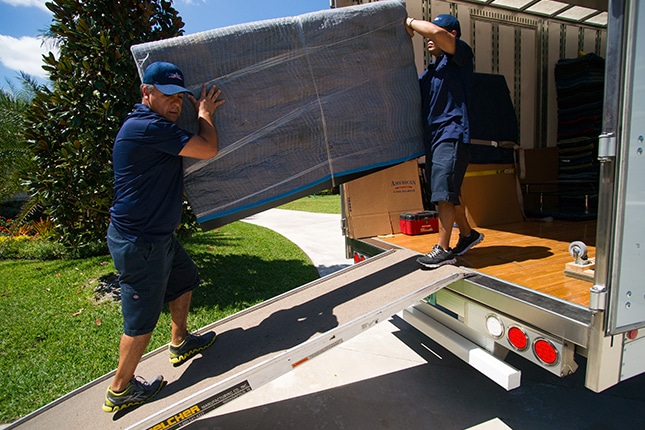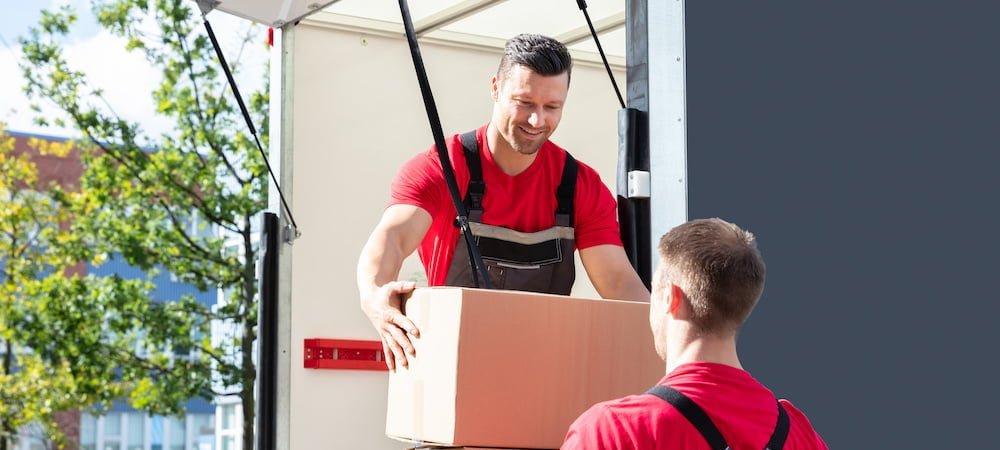Movers For Condos: Specialist Moving Experts Can Help Make Your Transition Smooth And Worry-free
History and Development of Moving Solutions
The Dawn of Moving: From Muscle to Devices
Image this: a handful of strong males hauling heavy trunks on wooden carts, browsing cobblestone streets with sweat and determination. Before the modern-day moving industry took shape, moving was a brutal, labor-intensive task. In ancient times, relocation often meant counting on large physical strength and rudimentary tools. The absence of specialized services implied households and merchants had to coordinate every detail themselves, frequently running the risk of damage or loss.
Isn't it remarkable how need fuels development? As cities expanded and commerce thrived, the need for effective, trustworthy moving options became glaringly apparent. Get in the age of horse-drawn wagons and later, motorized vehicles, which transformed how possessions traveled from one place to another.
Industrial Revolution: The Catalyst for Change
The 19th Moving Labor Only century's industrial boom reshaped numerous elements of life, including how individuals moved. Unexpectedly, urban migration rose, and with it, the need for professional movers skyrocketed. No longer was moving an easy task; it progressed into a specialized service offering:
- Packing proficiency to secure vulnerable products
- Organized loading techniques taking full advantage of space
- Transport solutions tailored to different ranges
This duration marked the birth of companies committed solely to moving, laying the groundwork for today's complex logistics and customer-centric approaches.
Technological Advancements and Their Effect
Can you think of moving without modern devices? The development of hydraulic lifts, forklifts, and pallet jacks changed the market over night. Unexpectedly, movers might manage large furnishings and heavy home appliances with ease, decreasing injuries and improving effectiveness.
The combination of digital innovation stimulated a brand-new wave of innovation. GPS tracking, online reservation platforms, and real-time inventory management have actually become staples in the moving services landscape. These tools not only boost openness but also empower consumers to remain connected and notified throughout their moving journey.
Key Milestones in Moving Provider Evolution
| Era | Development | Significance |
|---|---|---|
| Ancient Times | Manual work and standard carts | Foundation of moving as a need |
| 19th Century | Horse-drawn wagons and packing services | Birth of expert moving business |
| 20th Century | Motorized trucks and mechanized devices | Increased efficiency and scale |
| 21st Century | Digital integration and GPS innovation | Enhanced client experience and logistics |
Reflections on the Journey
Assessing the development of movers, one might question: how did a simple act of transferring possessions become an advanced market? It's a tale of strength, adaptation, and constant enhancement. From the sweat-soaked streets of old to the precision-driven operations these days, the history of moving services is as vibrant as the people who count on them.
Next time you load a box or employ a mover, consider the layers of history ingrained in every action. The journey of movers encapsulates human resourcefulness, changing what was when an overwhelming job into a seamless experience.
Checking out the Spectrum of Moving Providers
When the time concerns move your life from one address to another, the series of moving services readily available can feel like navigating a labyrinth. Do you need a basic loading and dumping team, or does your move need the finesse of full packing and unpacking? Comprehending the nuances can save hours of frustration and unexpected expenses.
Common Kinds Of Moving Services
- Regional Relocations: Created for relocations within a city or city, these services typically run on a per hour basis, best for short distances.
- Long-Distance Moves: Covering moves beyond 100 miles, these require more coordination, from logistical planning to protect transportation, typically priced by weight and range.
- Full-Service Moves: Movers manage everything-- packaging, loading, transporting, discharging, and in some cases even unpacking. Ideal for those pushed for time or energy.
- Self-Service Moves: You pack and pack your personal belongings, while the business deals with transport and unloading. A happy medium offering cost savings and some benefit.
- Specialized Moves: For fragile, bulky, or important products like pianos, antiques, or artwork, needing specific equipment and expertise.
Professional Tips to Navigate Your Moving Service Choices
- Prioritize Flexibility: Choose a service that adjusts to unforeseen hold-ups or last-minute changes-- stiff schedules can turn a smooth move into a logistical nightmare.
- Inspect Insurance Coverage Options: Not all moving companies offer the very same level of security. Understanding your coverage can avoid distress if something goes awry.
- Demand Detailed Stocks: An accurate product list avoids disagreements and ensures responsibility, especially when dealing with long-distance or specialized moves.
- Consider Season: Seasonal need can affect availability and rates. Early booking during off-peak seasons might give much better service and versatility.
- Ask About Packaging Materials: Top quality boxes, bubble wrap, and cushioning can be the difference between a scratched heirloom and a pristine arrival.
Table: Service Features Compared
| Service Type | Who Loads? | Transport Mode | Normal Rates Model | Suitable For |
|---|---|---|---|---|
| Local Move | Consumer or Movers | Truck | Hourly | Brief distances, little loads |
| Long-Distance Move | Movers | Truck or Container | Weight & & Distance | Cross-state or regional relocation |
| Full-Service Move | Movers | Truck | Flat or Weight-Based | Time-sensitive, high-stress relocations |
| Self-Service Move | Consumer | Truck or Container | Flat or Hourly | Cost-conscious, hands-on movers |
| Specialized Move | Movers with proficiency | Specialized Devices | Customized Quote | Delicate or valuable items |
The Unseen Complexity Behind Each Option
Have you ever questioned why moving seems simple and easy on tv but turns into a waterfall of last-minute choices in genuine life? The reality lies in the intricacies of each service type. For instance, full-service relocations might appear like a luxury, however the know-how associated with packaging fragile treasures or disassembling bulky furniture is a craft refined over years. Meanwhile, deciding for a self-service move might conserve cash, but it requires a keen understanding of how to pack effectively-- did you understand that stacking strangely shaped boxes incorrectly can trigger internal shifting during transit, wrecking vulnerable contents?
Picking the best type of moving service is not practically convenience-- it's about securing your memories and financial investments. What's your move's story going to be?

Packaging and Moving Methods
Ever attempted to fit a travel suitcase that just won't close? That's the kind of puzzle expert movers resolve daily-- but on a much larger scale. The secret lies not in brute force but in strategic placement and smart use of space. Packing isn't simply about stuffing products into boxes; it's an art type where every inch counts.
Layering for Success
Think of a painter layering colors to develop depth. When packing, begin with much heavier items at the bottom, then cushion with softer materials like bubble wrap or towels. This avoids damage and maximizes box stability. Unusually formed items can slip into spaces, reducing lost space.
- Wrap delicate products separately with tissue or foam to avoid scratches.
- Use clothes as padding-- it's both efficient and environmentally friendly.
- Fill empty spaces with packing peanuts or crumpled paper to decrease motion.
Labeling: The Unsung Hero

What great is best packing if you invest hours searching through boxes? In-depth labeling is a game-changer. Instead of vague tags like "Kitchen area," try this approach:
| Label | Description | Top priority |
|---|---|---|
| Vulnerable - Glasses | Manage with care, contains fragile items | High |
| Basics - Opening Night | Items required instantly after moving | Immediate |
| Books - Study Space | Stacked, heavy books | Medium |
Strategic Packing Tips
- Dismantle big furnishings and keep screws in labeled bags taped to the pieces.
- Usage uniform box sizes when possible-- stacking ends up being easier and more secure.
- Do not overpack boxes; weight limits exist for a factor. Go for 40-50 pounds max.
- Wrap furniture edges with moving blankets to prevent scratches during transit.
- Seal boxes with high-quality packaging tape-- double layers on the bottom are vital.
Why do some movers swear by a color-coded system? Since it eliminates guesswork on moving day. Appoint each room a color and mark boxes appropriately. This small step can save hours when unloading and unpacking.
Packaging and moving need accuracy-- like a chess video game where every relocation counts. Have you ever observed how some movers deal with bulky items easily? They take advantage of angles and pivot indicate navigate tight corners without damage. It's not muscle; it's technique.
Hidden Battles Behind the Moving Van Doors
Ever viewed a team of professional movers carry a grand piano through a narrow entrance and questioned how they pull it off without a scratch? The art of moving isn't simply muscle and trucks; it's a delicate dance with unpredictability. Weather can turn from a sunlit blessing to a torrential threat in minutes, turning a simple drive into a logistical labyrinth.
One well-known hurdle is the labyrinthine layout of some homes or apartments. Staircases too tight for dollies, doorways narrower than basic boxes, or elevators that hardly fit a sofa-- these physical peculiarities demand innovative options on the area. Movers typically resort to non-traditional tactics like taking apart furniture or using tailor-made cushioning to secure both the item and the residential or commercial property.
Accuracy Packaging: More Than Simply Wrapping
It's tempting to think packaging is merely packing boxes, but the reality is an intricate puzzle of weight circulation and fragility. Movers should expect how products will move throughout transit-- a mistake can indicate shattered treasures or dinged up appliances. The trump card? Strategic layering and using materials with specific shock-absorbing qualities.
- Bubble wrap is basic, however rotating it with foam sheets can drastically lower impact damage.
- Heavy products address the bottom; fragile ones nestle on top, cushioned by soft fabrics.
- Labeling boxes not just by contents but by managing directions ensures quicker, much safer unloading.
Another less discussed pressure is the mental toll. The clock ticks relentlessly, and every hold-up ripples through tight schedules. Staying calm amid chaotic last-minute modifications requires mental dexterity and team synergy.
Traffic Congestion and Timing: The Undetectable Opponents
| Challenge | Professional Method | Impact |
|---|---|---|
| Urban congestion | Route optimization apps and flexible scheduling | Decreases hold-ups and fuel intake |
| Parking limitations | Pre-arranged permits or strategic parking close by | Prevents fines and time loss |
| Unpredictable weather condition | Water resistant coverings and contingency plans | Protects the condition of products and devices |
Do you truly know what it takes to keep a moving day on track? It's not simply about strength or endurance; it has to do with foresight, flexibility, and a deep understanding of every piece of the puzzle. The next time you see movers at work, keep in mind: behind that smooth operation lies a series of determined maneuvers and fast thinking that couple of ever notice.